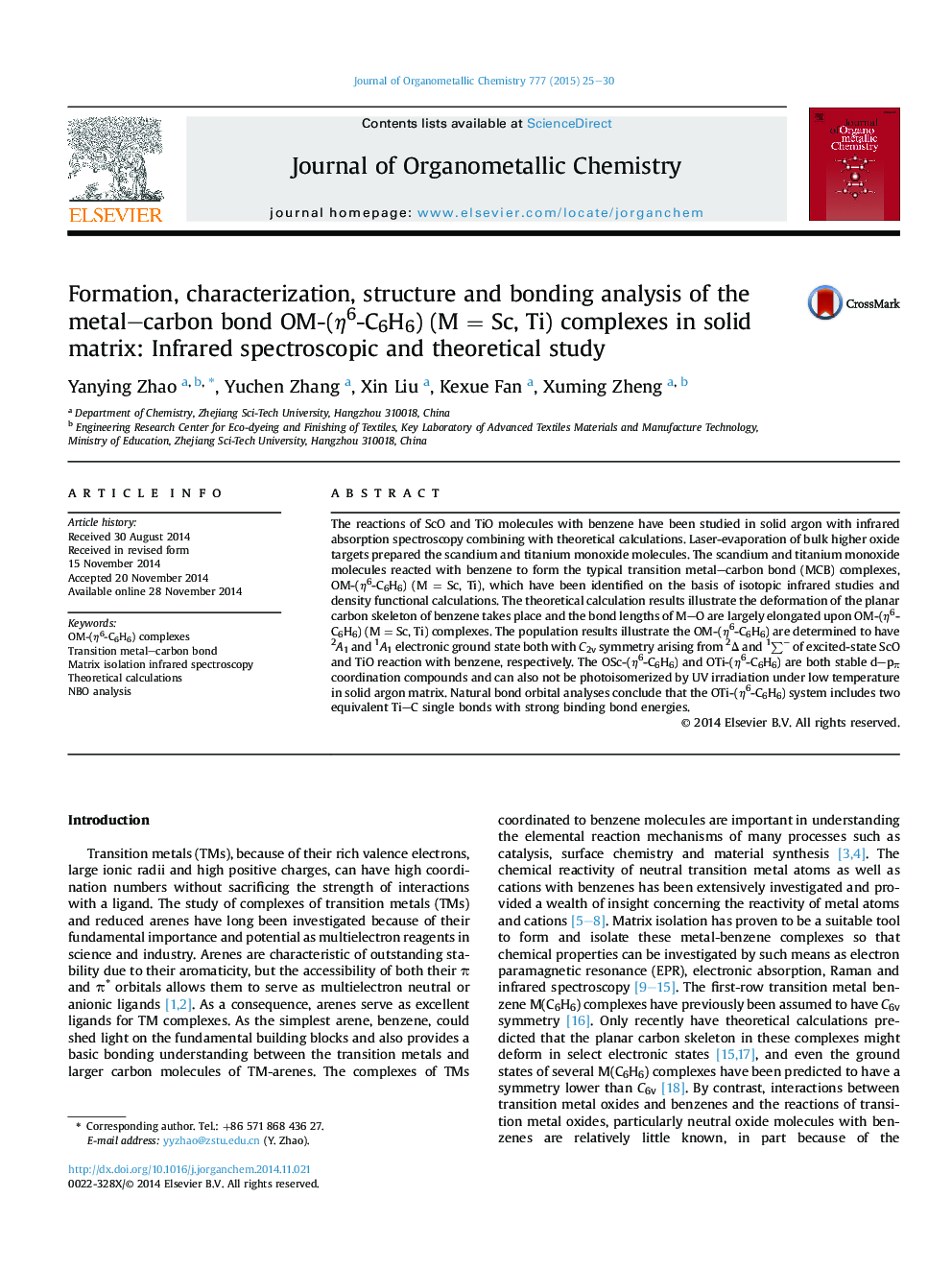| Article ID | Journal | Published Year | Pages | File Type |
|---|---|---|---|---|
| 1323545 | Journal of Organometallic Chemistry | 2015 | 6 Pages |
•The OM-(η6-C6H6) (M = Sc, Ti) complexes were formed and characterized.•The complexes are of the deformation of the planar carbon skeleton of benzene.•The bond lengths of M–O are largely elongated upon the coordinated complexes.•The d–pπ coordination complexes can not be photoisomerized by UV irradiation.
The reactions of ScO and TiO molecules with benzene have been studied in solid argon with infrared absorption spectroscopy combining with theoretical calculations. Laser-evaporation of bulk higher oxide targets prepared the scandium and titanium monoxide molecules. The scandium and titanium monoxide molecules reacted with benzene to form the typical transition metal–carbon bond (MCB) complexes, OM-(η6-C6H6) (M = Sc, Ti), which have been identified on the basis of isotopic infrared studies and density functional calculations. The theoretical calculation results illustrate the deformation of the planar carbon skeleton of benzene takes place and the bond lengths of M–O are largely elongated upon OM-(η6-C6H6) (M = Sc, Ti) complexes. The population results illustrate the OM-(η6-C6H6) are determined to have 2A1 and 1A1 electronic ground state both with C2v symmetry arising from 2Δ and 1∑− of excited-state ScO and TiO reaction with benzene, respectively. The OSc-(η6-C6H6) and OTi-(η6-C6H6) are both stable d–pπ coordination compounds and can also not be photoisomerized by UV irradiation under low temperature in solid argon matrix. Natural bond orbital analyses conclude that the OTi-(η6-C6H6) system includes two equivalent Ti–C single bonds with strong binding bond energies.
Graphical abstractThe 9s orbital of metal monoxide is the primary acceptor orbital for donation from the filled pHOMO-4 orbital of benzene fragment. The electrons on singly occupied 1δ molecular orbital of MO would feedback to the virtual πLUMO orbital of C6H6 in perpendicular bonding geometry.Figure optionsDownload full-size imageDownload as PowerPoint slide
